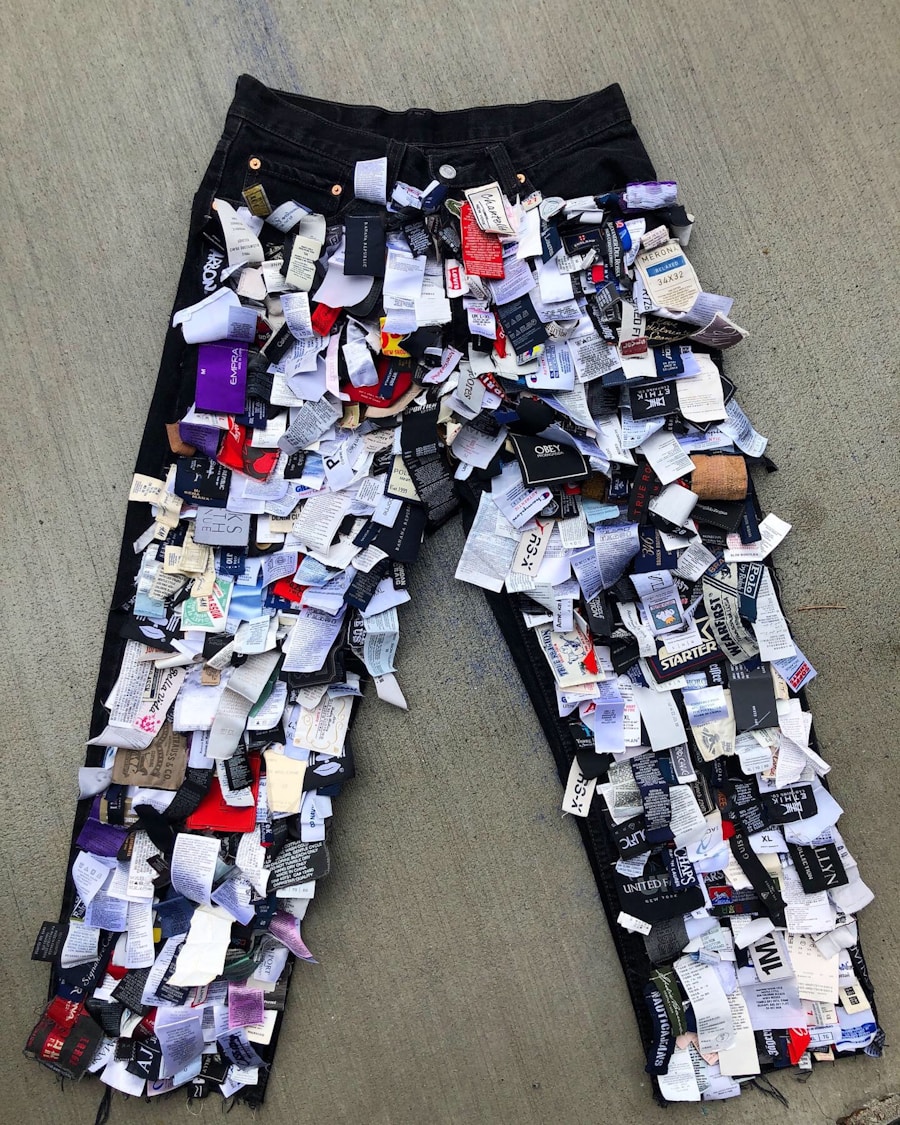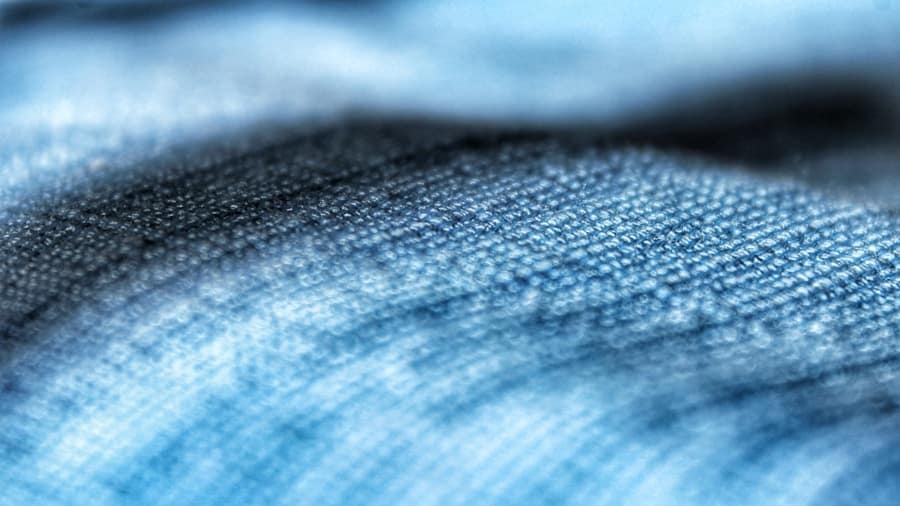The integration of technology into textiles has given rise to a new category known as smart fabrics, which are revolutionizing various sectors, particularly healthcare. Smart fabrics, also referred to as e-textiles or intelligent textiles, are materials that can sense and respond to environmental stimuli. These fabrics are embedded with sensors, actuators, and other electronic components that enable them to monitor physiological parameters, provide therapeutic functions, and enhance the overall patient experience.
The healthcare industry is increasingly adopting these innovative materials to improve patient outcomes, streamline care processes, and enhance the quality of life for individuals undergoing treatment. The evolution of smart fabrics in healthcare is driven by the need for more personalized and efficient patient care. Traditional textiles used in medical settings often lack the capability to provide real-time data or adapt to the needs of patients.
In contrast, smart fabrics can monitor vital signs such as heart rate, temperature, and respiratory rate, allowing for continuous health tracking without the need for cumbersome devices. This seamless integration of technology into everyday fabrics not only enhances patient monitoring but also opens up new avenues for rehabilitation and recovery, making it a pivotal area of research and development in modern medicine.
Key Takeaways
- Smart fabrics in healthcare are revolutionizing patient care by integrating technology into everyday clothing and textiles.
- Smart fabrics offer benefits such as monitoring vital signs, promoting wound healing, and providing comfort and mobility for patients during recovery.
- The technology behind smart fabrics includes sensors, actuators, and conductive materials, which can be applied in various patient care settings.
- Smart fabrics play a crucial role in preventing infections and complications by providing a barrier against pathogens and promoting a sterile environment.
- The use of smart fabrics in patient recovery has shown positive impacts on comfort, mobility, and overall well-being, as supported by case studies and research.
Benefits of Smart Fabrics for Patient Recovery
One of the most significant advantages of smart fabrics in healthcare is their ability to facilitate patient recovery through enhanced monitoring and feedback mechanisms. For instance, smart bandages equipped with sensors can track wound healing by measuring parameters such as moisture levels and temperature. This real-time data allows healthcare providers to make informed decisions about treatment plans, potentially reducing the risk of complications and improving healing times.
By providing immediate feedback on the condition of a wound, these smart textiles can alert medical staff to any signs of infection or deterioration, enabling timely interventions. Moreover, smart fabrics can play a crucial role in rehabilitation processes. For patients recovering from surgery or injury, wearable smart textiles can monitor movement and provide biofeedback to encourage proper rehabilitation exercises.
For example, smart shirts embedded with motion sensors can analyze a patient’s posture and movement patterns during physical therapy sessions. This data can be used to tailor rehabilitation programs to individual needs, ensuring that patients are performing exercises correctly and effectively. The ability to personalize recovery plans based on real-time data not only enhances the efficacy of rehabilitation but also empowers patients by involving them in their recovery journey.
Smart Fabric Technology and its Applications in Patient Care

The technology behind smart fabrics encompasses a range of innovations that enable them to perform various functions in patient care. At the core of these fabrics are sensors that can detect physiological signals such as heart rate variability, muscle activity, and even biochemical markers through sweat analysis. These sensors are often made from conductive materials that can be woven into traditional textiles without compromising comfort or wearability.
For instance, researchers have developed fabrics that incorporate silver nanoparticles to create antimicrobial properties while also allowing for electrical conductivity. Applications of smart fabric technology in patient care are diverse and continually expanding. One notable application is in the development of smart clothing for chronic disease management.
For patients with conditions such as diabetes or cardiovascular diseases, smart textiles can provide continuous monitoring of vital signs and alert patients or caregivers when readings fall outside of normal ranges. This proactive approach to health management can lead to early detection of potential health crises, allowing for timely medical intervention. Additionally, smart fabrics are being explored for use in sleep monitoring, where they can track sleep patterns and provide insights into sleep quality, which is crucial for overall health and recovery.
The Role of Smart Fabrics in Preventing Infections and Complications
Infection control is a critical aspect of patient care, particularly in hospital settings where patients are vulnerable to nosocomial infections. Smart fabrics have emerged as a promising solution for enhancing infection prevention strategies. For example, antimicrobial smart textiles can be used in hospital gowns, bed linens, and wound dressings to reduce the risk of bacterial colonization.
These fabrics are treated with agents that inhibit the growth of pathogens while maintaining comfort and breathability for patients. Furthermore, smart fabrics can contribute to infection prevention through their ability to monitor environmental conditions. Some advanced textiles are equipped with sensors that detect changes in humidity or temperature that may indicate an increased risk of infection.
By providing real-time data on these environmental factors, healthcare providers can take proactive measures to mitigate risks. For instance, if a smart fabric detects elevated humidity levels in a wound dressing, it can alert medical staff to change the dressing before an infection develops. This proactive approach not only enhances patient safety but also reduces healthcare costs associated with treating infections.
Impact of Smart Fabrics on Patient Comfort and Mobility
Patient comfort is paramount in healthcare settings, especially for individuals recovering from surgery or managing chronic conditions. Traditional medical garments often prioritize functionality over comfort, leading to discomfort during prolonged wear. Smart fabrics address this issue by combining advanced technology with soft, breathable materials that enhance the overall patient experience.
For instance, smart textiles designed for post-operative recovery can provide gentle compression while allowing for adequate airflow, promoting healing without sacrificing comfort. Mobility is another critical factor in patient recovery. Smart fabrics can facilitate movement by incorporating stretchable materials that adapt to the body’s movements.
This balance between support and mobility is essential for encouraging patients to remain active during their recovery process. Additionally, some smart fabrics are designed with built-in sensors that monitor movement patterns and provide feedback on gait and balance, helping patients improve their mobility safely.
Case Studies and Research on the Effectiveness of Smart Fabrics in Patient Recovery

Numerous studies have been conducted to evaluate the effectiveness of smart fabrics in enhancing patient recovery outcomes. One notable case study involved the use of smart bandages in post-surgical patients. Researchers found that these bandages significantly reduced healing times compared to traditional dressings by providing continuous monitoring of wound conditions and enabling timely interventions when issues arose.
Patients using smart bandages reported higher satisfaction levels due to reduced pain and discomfort associated with traditional dressing changes. Another research initiative focused on the application of smart clothing in cardiac rehabilitation programs. Participants wearing smart shirts equipped with heart rate monitors were able to receive real-time feedback during exercise sessions.
The study demonstrated that patients who utilized this technology showed greater adherence to prescribed exercise regimens and experienced improved cardiovascular fitness levels compared to those who did not use smart clothing. These findings underscore the potential of smart fabrics not only to enhance recovery but also to empower patients by providing them with tools for self-management.
Challenges and Limitations of Implementing Smart Fabrics in Healthcare Settings
Despite the promising potential of smart fabrics in healthcare, several challenges hinder their widespread adoption. One significant barrier is the cost associated with developing and implementing these advanced textiles. The integration of sensors and electronic components into fabrics often results in higher production costs compared to traditional textiles.
This financial burden may limit accessibility for smaller healthcare facilities or those operating under tight budgets.
Ensuring that patient data is protected from unauthorized access is paramount; however, many healthcare providers may lack the necessary infrastructure or expertise to implement robust cybersecurity measures effectively.
Furthermore, there is a need for standardized protocols regarding data sharing between devices and healthcare systems to ensure interoperability and facilitate seamless integration into existing workflows.
Future Implications and Potential Developments in Smart Fabric Technology for Patient Recovery
The future of smart fabric technology in healthcare holds immense promise as research continues to advance in this field. One potential development is the integration of artificial intelligence (AI) algorithms with smart textiles to enhance data analysis capabilities. By leveraging AI, smart fabrics could not only monitor physiological parameters but also predict potential health issues based on historical data trends.
This predictive capability could revolutionize preventive care by enabling healthcare providers to intervene before complications arise. Moreover, advancements in material science may lead to the creation of even more sophisticated smart fabrics that are lighter, more durable, and capable of performing multiple functions simultaneously. For instance, future iterations of smart bandages could incorporate drug delivery systems that release medication based on real-time monitoring of wound conditions.
Such innovations would further enhance patient recovery by providing targeted therapies while minimizing discomfort associated with traditional administration methods. As the healthcare landscape continues to evolve towards more personalized and technology-driven approaches, the role of smart fabrics will likely expand significantly. Their ability to improve patient outcomes through enhanced monitoring, infection prevention, comfort, and mobility positions them as a vital component of future healthcare solutions aimed at optimizing recovery processes across various patient populations.
A related article to The Impact of Smart Fabrics on Patient Recovery Outcomes is “Discover the Best Software for Logo Design Today” which can be found at this link. This article explores the importance of using the right software for creating logos and how it can impact the overall branding and marketing efforts of a business. Just like smart fabrics can revolutionize patient recovery outcomes, the right software can make a significant difference in the design and branding process for companies.
FAQs
What are smart fabrics?
Smart fabrics are textiles that have been designed and manufactured to include technology that provides additional functionality, such as monitoring, sensing, or responding to environmental conditions.
How do smart fabrics impact patient recovery outcomes?
Smart fabrics can impact patient recovery outcomes by providing continuous monitoring of vital signs, promoting better circulation, reducing the risk of pressure ulcers, and enhancing overall comfort for patients.
What are some examples of smart fabrics used in healthcare settings?
Examples of smart fabrics used in healthcare settings include pressure-sensing mattresses, temperature-regulating bed linens, and garments with embedded sensors for monitoring vital signs.
What are the potential benefits of using smart fabrics in patient care?
The potential benefits of using smart fabrics in patient care include early detection of health issues, improved patient comfort, reduced risk of complications, and more efficient use of healthcare resources.
Are there any challenges or limitations associated with the use of smart fabrics in patient care?
Challenges and limitations associated with the use of smart fabrics in patient care include cost, durability, privacy concerns, and the need for healthcare professionals to be trained in using and interpreting data from smart fabric technologies.

